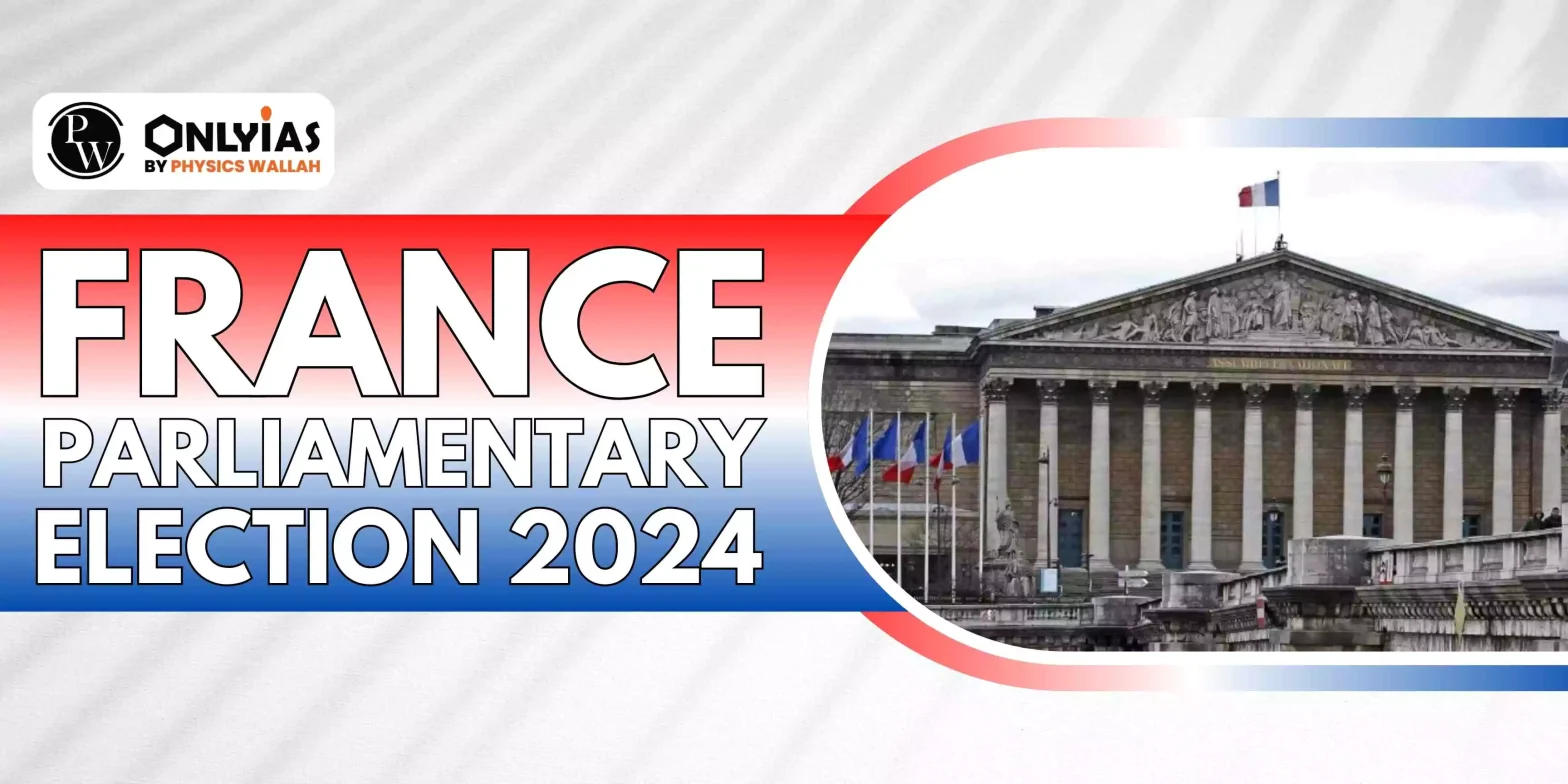A loose alliance of left-wing parties has secured the most seats in the 577-seat National Assembly. No group won an absolute majority, leaving France in political limbo without a clear path to forming a new government.
| Relevancy for Prelims: French Constitution, Indian Constitution, Secularism, etc.
Relevancy for Mains: Similarities and differences between the Indian Constitution and the French Constitution, etc. |
Enroll now for UPSC Online Classes
India and France
| Attributes |
France |
India |
| Nature |
- It has a unitary form of government and a semi-presidential government.
|
- India is a Parliamentary form of democracy with the President as its nominal head.
|
| Law Making Power |
- The French Parliament lacks dominant law- making.
- The legislature has a list of subjects on which it should pass legislation, while the President makes the law on the rest of the issues.
|
- With respect to law-making on the Central list as per the seventh schedule where the president has Ordinance making power only.
|
| Parliament |
- The French Parliament is bicameral, consisting of two houses: National Assembly and the Senate.
- The National Assembly’s significantly greater powers than the Senate’s make the French bicameral system an unequal one.
- The Senate cannot be dissolved.
|
- Rajya Sabha has Limited power as compared to Lok Sabha.
- Only in the case of constitutional amendment Rajya Sabha is on an equal footing with Lok Sabha in India.
|
| Secularism |
- Follows the rigid principle of secularism: The state does not support religious activities but also does not interfere in private religious practices.
- It prohibits any visible religious symbols in public spaces. This model leaves no scope for the idea of the state- supported religious reforms.
|
- Indian secularism respects all religions equally and is the best example of positive secularism.
|
| Amendment |
- Both the Houses of Parliament have to pass a resolution by a 3/5th majority.
- So rigid in nature The President may also choose to refer to the amendment to the people by referendum.
|
- Blend of flexible and rigid. No provisions like referendums etc.
|
| President |
- The President is elected for a fixed term (5 years).
- The President shall be elected by an absolute majority of votes polled (Second Ballot system).
- The High Court of Justice will inquire about the impeachment of the president.
|
- No such body in India president’s impeachment follows constitutional provisions and parliament is a body to do so.
|
| Prime Minister |
- The French Prime Minister is an advisor to the President (concept of cohabitation).
- Between the two positions, there is a division of functions rather than a division of power.
- The French President is in charge of foreign affairs and domestic issues.
- The PM, on the other hand, is in charge of the company’s day-to- day operations.
- Local government and domestic.
|
- The real head of the government is the prime minister
|
| Judiciary |
- The High Council of Justice nominates the judges.
- The President and members of the judiciary are in charge of this body.
- The President is also referred to as the “Guardian of the Judiciary.”
|
- The higher judiciary employs a collegium method for appointing judges to the higher Judiciary.
- Oath is administered by the president and the impeachment process completes under the oversight of the Parliament.
|
Conclusion
India and France have distinct political systems, reflecting unique approaches to government structure, law-making, secularism, amendments, presidential roles, prime ministerial duties, and judicial appointments.
Check Out UPSC NCERT Textbooks From PW Store
![]() 11 Jul 2024
11 Jul 2024

